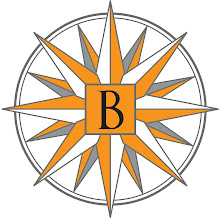The Oregonian reports on a conflict that often breaks out over historical sites:
In this case, Ron Exeter, a well-meaning botanist at the Bureau of Land Management, wants to landscape with native plants around Yaquina Head Lighthouse, where the soil was killed by the acid wash used to remove the tower's toxic lead paint.
In this case, Ron Exeter, a well-meaning botanist at the Bureau of Land Management, wants to landscape with native plants around Yaquina Head Lighthouse, where the soil was killed by the acid wash used to remove the tower's toxic lead paint.
Long-time Yaqina Head volunteer George Collins is fighting BLM tooth and nail: "It was just plain grass and soil for years and years until this came
along. There simply was nothing like that so it doesn't
conform to the history." He objects to the utilitarian lighthouse being "made all frilly for visitors to stop by." According to the Oregonian, "state and federal agencies are working together to resolve the problems."
Here are excerpts from historic inspection reports (courtesy of the United States Lighthouse Society), which seem to support Mr. Collins's objections. Note the changes in acreage, soil, paths and garden size after 29 years. [All spelling sic; emphasis ours.]
From 1881:
From 1881:
Area of the entire site: 17.86 acres.
Character of surface soil: dark clayey loam.
Soil susceptibility: Grass grows well. Winds are too violent for shrubbery or trees.
Misc remarks: Wind at times sweeps across point of cape with great violence taking gravel stones from the cliffs 100' distant & hurling them against the dwelling with such force as to break the glass in the windows.
Paths and walks: Gravel walk around dwelling & from dwelling to tower.
Area inclosed: A board fence runs across point of cape from S shore to N shore, enclosing entire site. Keeper's dwelling is also enclosed by a neat picket fence.
Area of garden: About 1 acre.
From 1910:
Area of the entire site: 19.35 acres.
Character of soil surrounding the lighthouse: Sand.
Soil susceptibility: Yes, can be protected by grass.
Paths and walks: Cement around dwellings to tower.
Area inclosed: 12.08 acres inclosed with wire fence.
Area of garden: About 1/4 acre.
Illustration: Yaquina Head Light © Gerald C. Hill,






